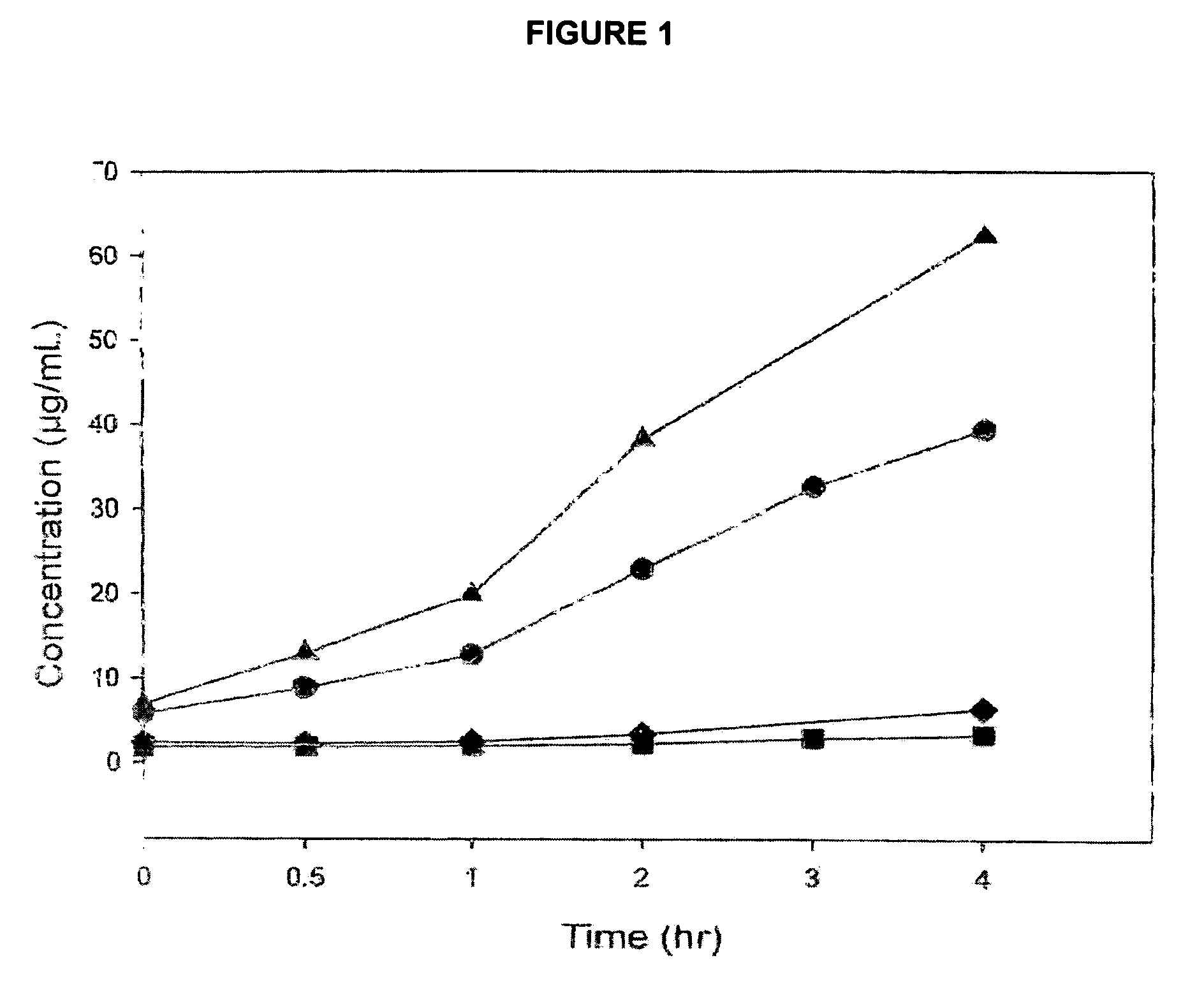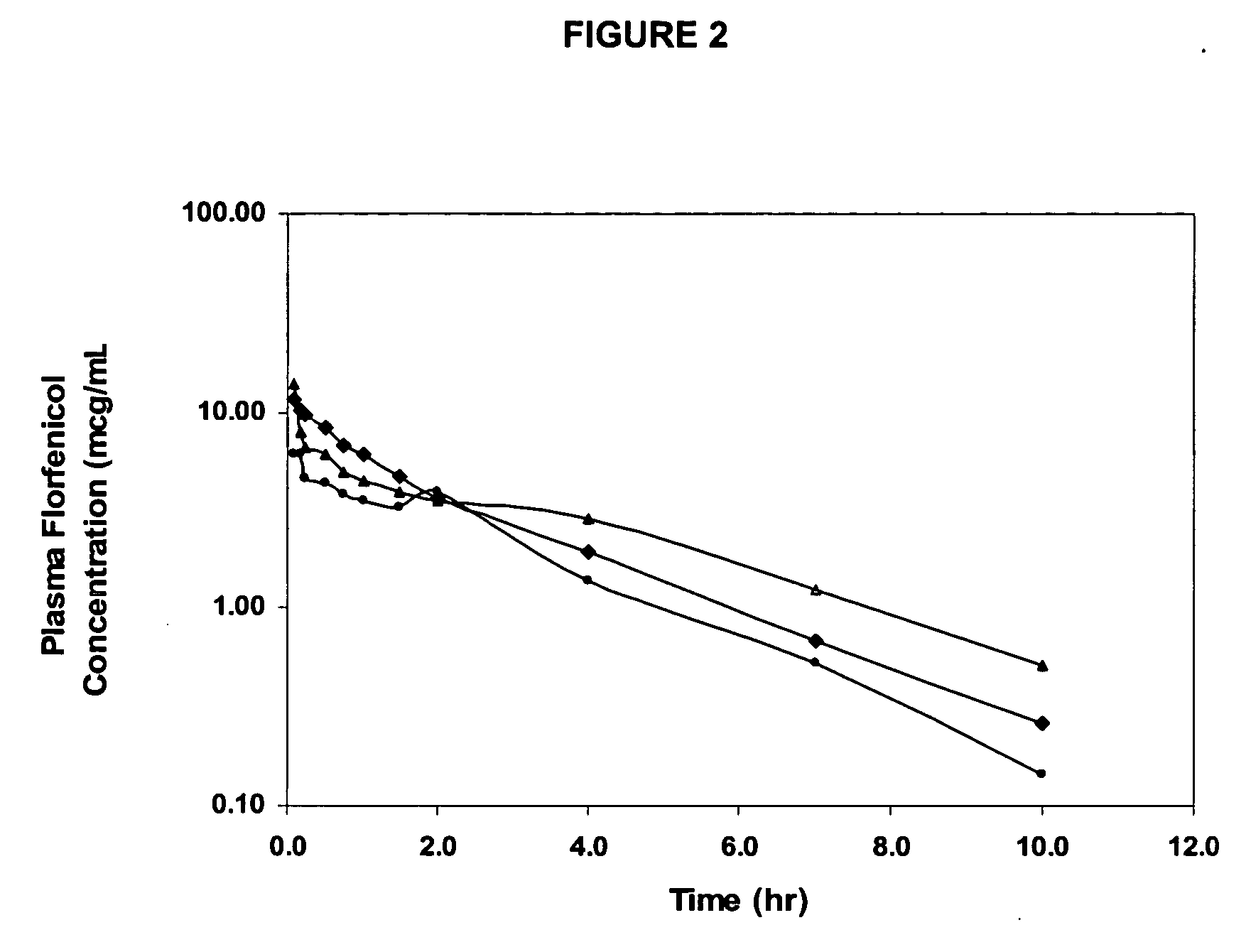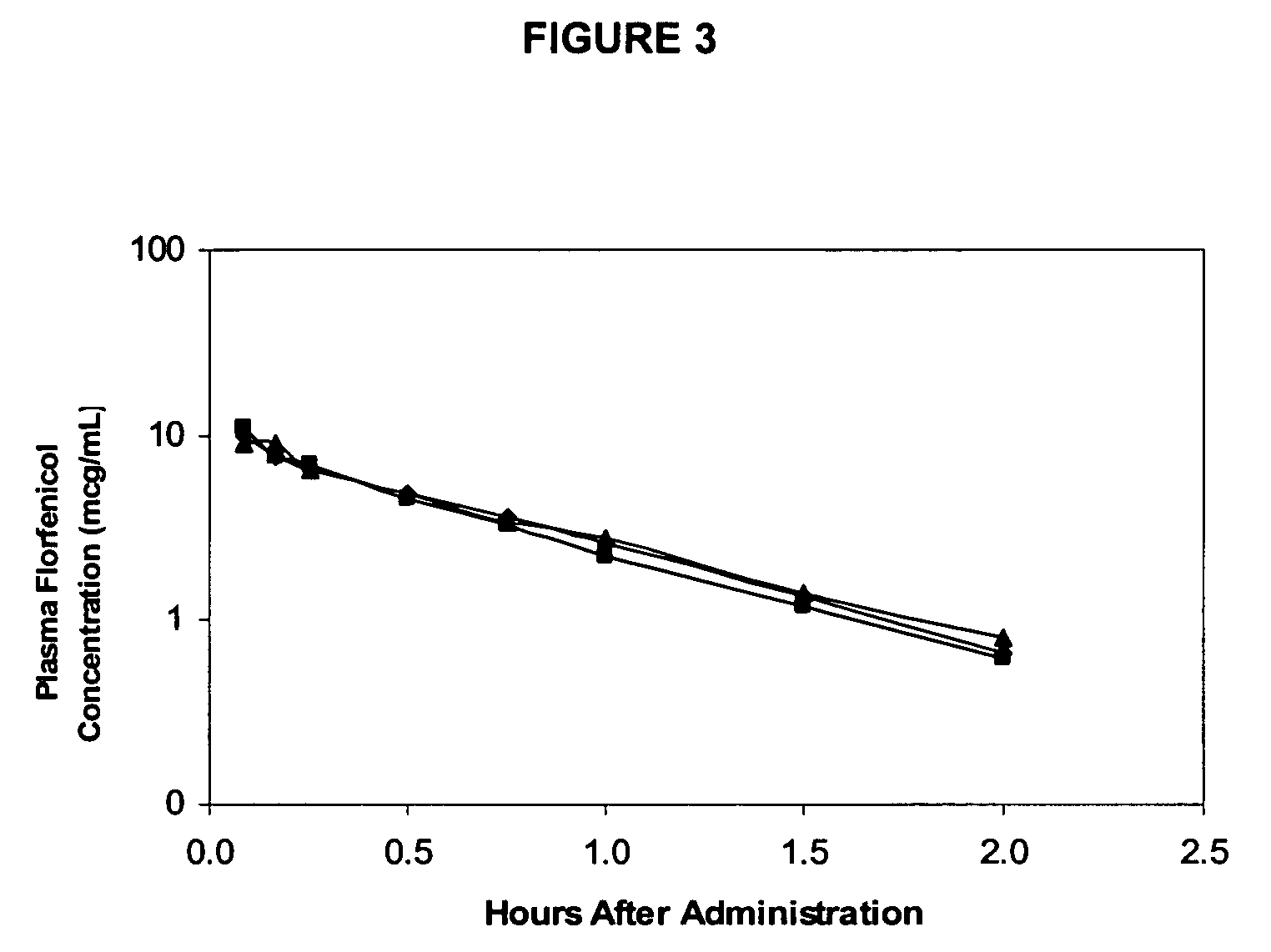Florfenicol prodrug having improved water solubility
a florfenicol and prodrug technology, applied in the field of phosphate esters of florfenicol, can solve the problems of significant localized irritation, and achieve the effect of increasing aqueous solubility and rapid and efficient conversion
- Summary
- Abstract
- Description
- Claims
- Application Information
AI Technical Summary
Benefits of technology
Problems solved by technology
Method used
Image
Examples
example 1
[1R, 2S-1-(4-Methanesulfonylphenyl)-2-(2,2-dichloroacetylamino)-3-fluoropropyl]-di-tert-butyl phosphate (1)
[0056] To a solution of florfenicol (14.32 g, 40 mmol) and tetrazole (3.96 g, 56 mmol) in anhydrous tetrahydrofuran (THF, 70 mL) under nitrogen, was added, dropwise, N,N-diethyl di-tert-butyl phosphoramidite (12.8 mL, 46 mmol). The resulting solution was stirred at ambient temperature for 1.5 hours, during which time a fine precipitate formed. Stirring was continued for an additional 22.5 hours, after which the suspension was cooled to −78 ° C. and a solution of m-chloroperbenzoic acid (75%, 12 g) in dichloromethane (60 mL) was added dropwise. The resulting solution was stirred at ambient temperature for 1.5 hours and then concentrated in vacuo. The residue was dissolved in ethyl acetate (200 mL) and washed with three 100 mL portions of saturated aqueous sodium bicarbonate. The organic layer was then dried over anhydrous sodium sulfate and concentrated in vacuo to yield a gum,...
example 2
[1R, 2S-1-(4-methanesulfonylphenyl)-2-(2,2-dichloroacetylamino(-3-fluoropropyl]phosphate (2)
[0060] To a solution of compound 1 (12.75 g, 23.2 mmol) in anhydrous dichloromethane (150 mL) under nitrogen, was added trifluoroacetic acid (15 mL), and the solution was stirred at ambient temperature for 2 hours. The solution was then concentrated in vacuo to yield a gum, which, upon trituration with diethyl ether, gave 9.97 g of compound 2 as a white solid.
[0061]1H NMR (d6 DMSO, 400 mHz): δ8.81 (d,1 H, J=9.0), 7.87 (d, 2H, J=8.4), 7.63 (d, 2H, J=8.4), 6.43 (s,1H), 5.58 (dd, 1H, J=9.6, 2.0), 4.80-4.3 (m, 3H), 3.18 (s, 3H).
[0062] ESMS (negative mode, relative abundance shown in parentheses): m / z435.55 (100), 437.45 (75).
[0063] HPLC: tR 9.1 min, purity 91.9% (Column: ACE 5 C18, 4.6×150 mm, mobile phase 0.1% H3PO4 / CH3CN gradient).
example 3
[1R,2S -1-(4-Methanesulfonylphenyl)-2-(2,2-dichloroacetylamino)-3-fluoropropyl]phosphate disodium salt (3)
[0064] The acid compound 2 (9.97 g, 22.8 mmol) was added in small portions to an aqueous solution of aqueous sodium bicarbonate (3.82 g, 45.5 mmol in 45 mL water). The resulting solution was run through an HP-20 resin column with water as the eluent. Fractions containing product were pooled and lyophilized to give 8.81 g of compound 3 as a white solid.
[0065]1H NMR (D2O, 400 mHz): δ7.75 (d, 1H J=7.1), 7.57 (d, 2H, J=7.1), 6.03 (s, 1H), 5.30 (br d, 1H, J-9.7), 4.75 (ddd, 1H, J=45.5, 9.0, 4.3), 4.47 (dt, 1H, J=47, 9.0), 4.33 (br m, 1 h), 3.07 (s, 3H).
[0066] ESMS (negative mode, relative abundance shown in parentheses): m / z 435.60 (100), 437.49 (70).
[0067] HPLC: tR 9.2 min, purity 97.3% (Column: ACE 5 Ca8, 4.6×150 mm, mobile phase: 0.1% H3PO4 / CH3CN gradient).
PUM
| Property | Measurement | Unit |
|---|---|---|
| Acidity | aaaaa | aaaaa |
| Acidity | aaaaa | aaaaa |
| Acidity | aaaaa | aaaaa |
Abstract
Description
Claims
Application Information
 Login to View More
Login to View More - R&D
- Intellectual Property
- Life Sciences
- Materials
- Tech Scout
- Unparalleled Data Quality
- Higher Quality Content
- 60% Fewer Hallucinations
Browse by: Latest US Patents, China's latest patents, Technical Efficacy Thesaurus, Application Domain, Technology Topic, Popular Technical Reports.
© 2025 PatSnap. All rights reserved.Legal|Privacy policy|Modern Slavery Act Transparency Statement|Sitemap|About US| Contact US: help@patsnap.com



